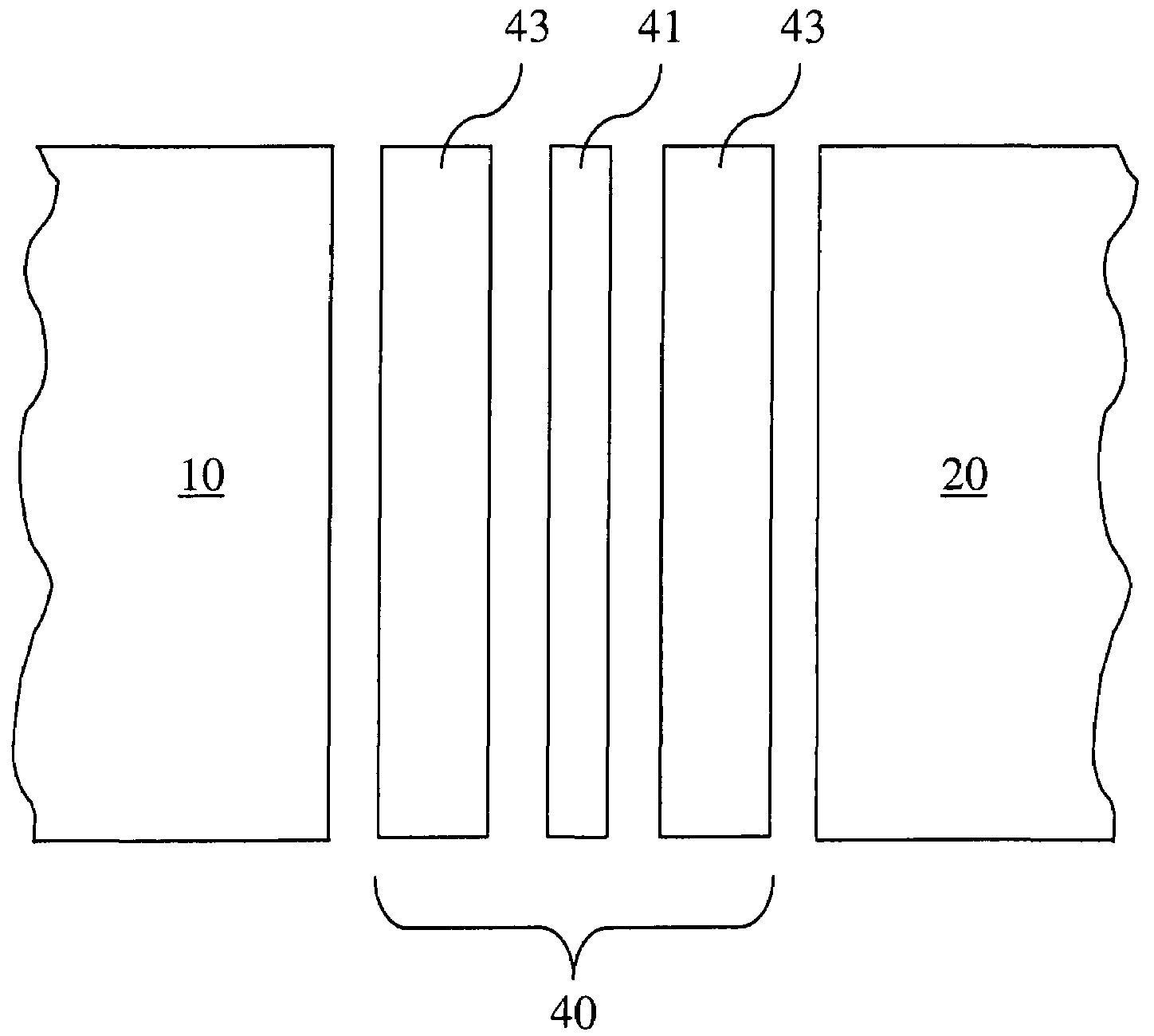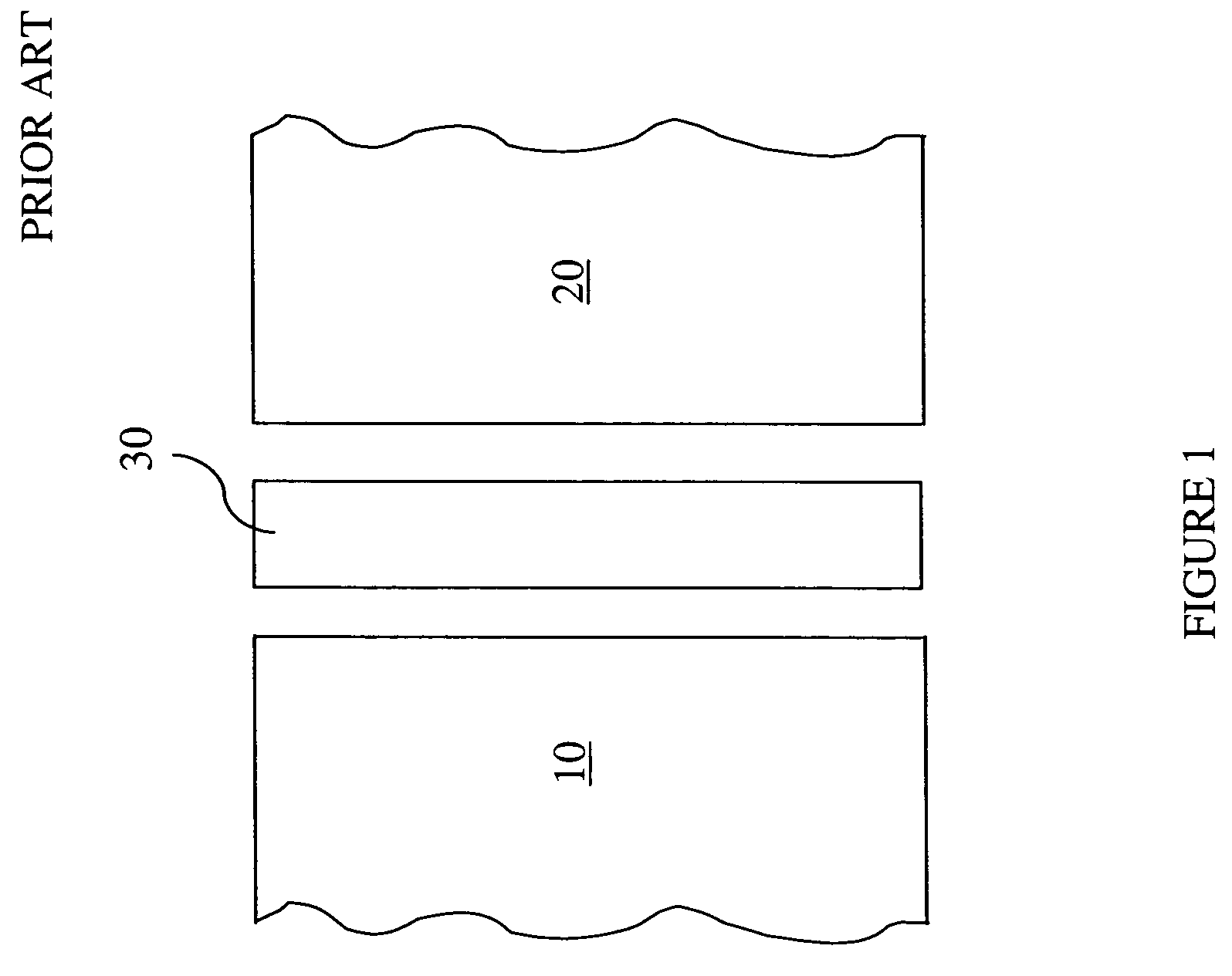Transient liquid phase bonding using sandwich interlayers
a technology of liquid phase bonding and sandwich interlayer, which is applied in the direction of turbines, manufacturing tools, solventing apparatus, etc., can solve the problems of affecting the bonding effect of the substrate, the current transient liquid phase bonding system and method does not produce enough strong bonds between the substrate for some applications, and the component distortion, etc., to achieve uniform hardness, strong bonding, and uniform hardness. uniform
- Summary
- Abstract
- Description
- Claims
- Application Information
AI Technical Summary
Benefits of technology
Problems solved by technology
Method used
Image
Examples
example 1
[0038]In this first sample, a single sheet of MBE 80 nickel-based brazing foil was utilized as the single interlayer 30 to join the single crystal substrate 10 to the polycrystal line substrate 20, as shown in FIG. 1. The amorphous sheet of MBF 80 nickel-based brazing foil was about 25 microns thick, and had a nominal composition of: 79.3 wt. % nickel, 15.3 wt. % chromium, 1.5 wt. % iron, 0.1 wt. % cobalt, 0.1 wt. % titanium, 0.1 wt. % aluminum, 3.7 wt. % boron 0.1 wt. % carbon. This commercially available MBF 80 nickel-based brazing foil was selected to provide approximately uniform chemical distribution across the bond region after solidification thereof. The boron in this sheet is a melting point depressant which allows the MBF 80 nickel-based brazing foil, to melt at about 1940° F., which is below the gamma prime solvus temperatures for both the single crystal substrate 10 and the polycrystalline substrate 20 utilized here.
[0039]TLP bonding was accomplished in this sample at a t...
example 2
[0042]In this second sample, an exemplary sandwich interlayer 40 of this invention was utilized to join the single crystal substrate 10 to the polycrystalline substrate 20, as shown in FIG. 2. The sandwich interlayer 40 comprised two outer layers 43 and a middle layer 41 sandwiched between the two outer layers 43. Each outer layer 43 comprised an amorphous sheet about 25 microns thick of the same MBF 80 nickel-based brazing foil used in Example 1. The middle layer 41 comprised a layer of 10 micron powder about 100 microns thick having the following nominal composition: 60 wt. % Ni, 12.4 wt. % Cr, 18.5 wt. % Co, 3.2 wt. % Mo, 5.0 wt. % Al, 4.3 wt. % Ti, 0.8 wt. % V, 0.1 wt. % Zr, 0.1 wt. % C, and 0.02 wt. % B. The total thickness of this sandwich interlayer 40 was about 150 microns thick, and the final bonded area was about 250 microns thick due to coarsening during bonding.
[0043]The same bonding parameters as utilized in Example 1 were utilized here. As before, TLP bonding was accom...
PUM
| Property | Measurement | Unit |
|---|---|---|
| thick | aaaaa | aaaaa |
| thick | aaaaa | aaaaa |
| time | aaaaa | aaaaa |
Abstract
Description
Claims
Application Information
 Login to View More
Login to View More - R&D
- Intellectual Property
- Life Sciences
- Materials
- Tech Scout
- Unparalleled Data Quality
- Higher Quality Content
- 60% Fewer Hallucinations
Browse by: Latest US Patents, China's latest patents, Technical Efficacy Thesaurus, Application Domain, Technology Topic, Popular Technical Reports.
© 2025 PatSnap. All rights reserved.Legal|Privacy policy|Modern Slavery Act Transparency Statement|Sitemap|About US| Contact US: help@patsnap.com



